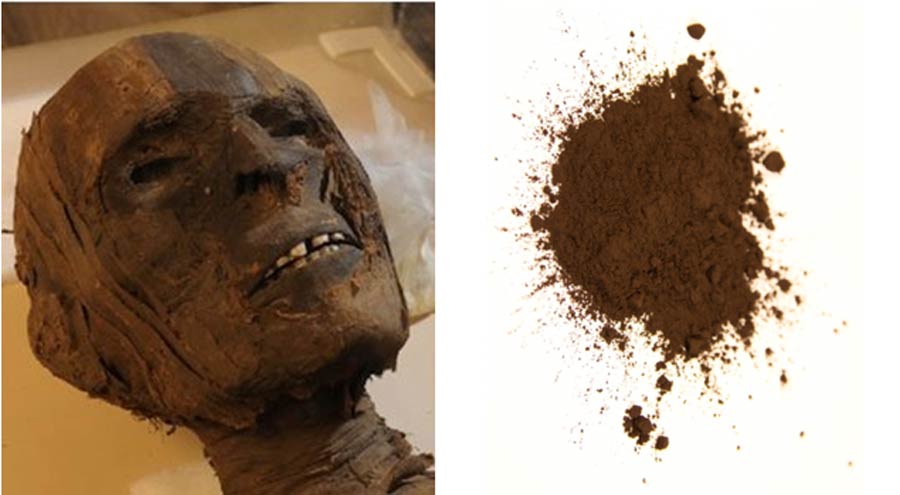Most people today would probably ᴀssociate Egyptian mummies with museums. This is unsurprising, as this is probably where most of us have seen them, especially in Europe. Yet, if I were to say that real mummies can be found in paintings, it may be a little odd, to say the least.
Mummy Brown Pigment in 19th-Century Art
Until relatively recently, Egyptian mummies , believe it or not, were used to produce a type of paint, which was called Mummy Brown, Mommia, or Momie. The main ingredient of this paint was, as you may have already guessed, ground up Egyptian mummies . This powder was mixed with white pitch and myrrh to produce a rich brown pigment. It was first made in the 16th century, and became a popular color amongst the Pre-Raphaelite painters of the mid-19th century.

For instance, it has been recorded that the British portraitist, Sir William Beechey, kept stocks of Mummy Brown. The French artist Martin Drölling also reputedly used Mummy Brown made with the remains of French kings disinterred from the royal abbey of St. Denis in Paris. It has been suggested that his L’interieur d’une cuisine is an example of extensive use of the pigment, while the mesmerizing painting by Edward Burne-Jones, enтιтled The Last Sleep of Arthur in Avalon, is also believed to have been painted using Mummy Brown.
How Mummy Brown Paint Lost Popularity
The use of this paint, however, became less popular in the early 20th century. This was partially due to the “realization” that the paint was actually made of real Egyptian mummies and the increasing awareness of the scientific, archaeological, anthropological and cultural importance that mummies had. The reduced use of Mummy Brown paint was also because of the significant decline in the number of mummies available.

For example, when the artist Edward Burne-Jones discovered what Mummy Brown was actually made of, he went to his studio, took his tube of Mummy Brown, and insisted on giving it a decent burial there and then. In 1964, Mummy Brown paint became “extinct” when C. Roberson & Co., a London firm that manufactures and supplies material for fine art, announced that they “ran out” of mummies for the production of their Mummy Brown paint.

Using Ground Mummies to Cure Disease
Art supplies were not the only things that ground bones of mummies were used for. More surprisingly, perhaps, is their use for medicinal purposes. This was due to the belief that mummies contained bitumen, which was used by the ancient Greeks to cure a variety of diseases. Apparently, in the absence of real bitumen, the so-called bitumen from a mummy would do just as well. Keep in mind that the word mummy itself is derived from the Persian word for bitumen, mum or mumiya.
As a result of this belief in the medicinal properties of Mummy powder, Egyptian mummies were exported to Europe, ground down, and sold in apothecaries throughout the continent. Part of the craze for Mummy powder was due to the claim that mummies had a mysterious life force that was transferrable to whoever ingested it. Hence, ground mummies were consumed by Europeans well into the 18th century.
Surprisingly High Demand for Egyptian Mummies
This high demand in Egyptian mummies meant that there was much money to be made in this trade. Unsurprisingly, forgeries were made by some to cash in on this lucrative business or to meet its high demands. Thus, when actual Egyptian mummies were short in supply, the corpses of convicted criminals were used instead.

This private enterprise meant that the bodies of executed criminals or slaves were treated with bitumen and exposed to the sun in order to produce authentic-looking mummies, which were then sold to traders. Once ground into powder, it would probably be near impossible to tell the difference between a genuine Egyptian mummy and a fresh corpse treated with bitumen.

Today, the pigment Caput Mortuum , which means “ᴅᴇᴀᴅ head” or “worthless remains,” is an alternative name for Mummy Brown and it is produced by popular brands such as Faber Castell. Nevertheless, you can be pretty sure that there are no ᴅᴇᴀᴅ bodies used in its production.





